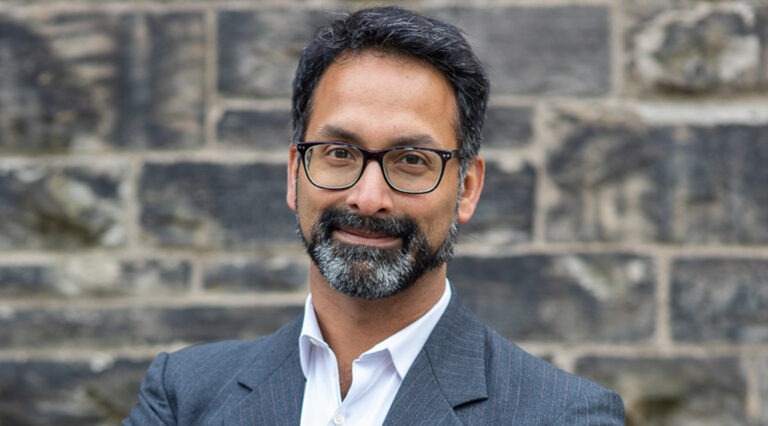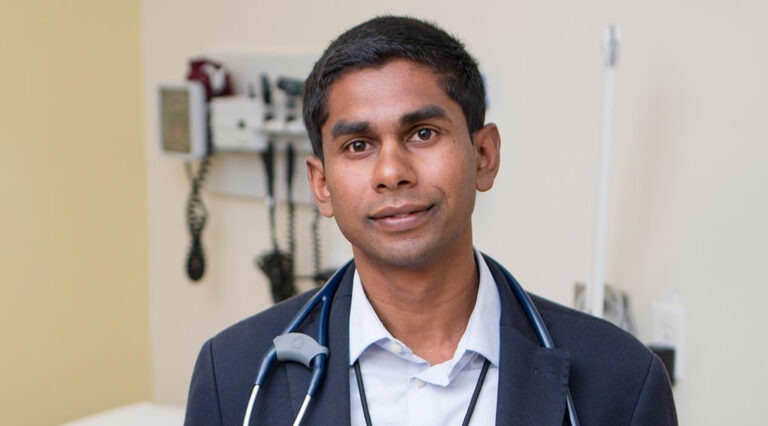Zoë Dodd (South Riverdale Community Health Centre) has been named the inaugural Community Scholar at MAP Centre for Urban Health Solutions.
A Hep C Program Coordinator and harm reduction worker at South Riverdale CHC, Dodd has worked in harm reduction for almost 20 years as a program coordinator, organizer and advocate. At South Riverdale CHC, she works with a diverse community of people; primarily people who use drugs.
“I’m thrilled to have this opportunity to focus on scientific research and system-wide solutions,” said Dodd. “At MAP, I plan to work with community to examine the drug treatment system. I think this research is crucial and timely given the state of drug policy in Canada and the overdose crisis.”
MAP launched the Community Scholar Program to bring community experts and scientists together to develop and test solutions that directly address community priorities and needs. For a one-year period, Community Scholars work with MAP scientists, staff and students, and others at Unity Health Toronto to develop a full-time, independent program of research.
“Zoe is a tireless advocate for people who use drugs and has worked on the development and implementation of harm reduction programs, and improving the conditions for our most marginalized community members” said Jason Altenberg, CEO at South Riverdale CHC. “Given the devastating effects of the opioid crisis, we are excited that she will have the opportunity to continue to look critically at the drug treatment and policy in Canada through this work.”
Dodd will be mentored by MAP scientist Dr. Ahmed Bayoumi with the support of Dr. Michelle Firestone. Dodd’s role will include working with people who use drugs to set specific research priorities in an often-overlooked area of study: people’s healing and well-being beyond a medicalized and abstinence-based concept of recovery.
“I can think of no better candidate for this position, as Zoë is already one of my most valued and thoughtful colleagues on research projects,” said Dr. Bayoumi. “I believe that her research questions, particularly those related to incarceration, mandatory drug treatment, and alternatives, have the potential to inform, and even to guide, polices relating to drug use in Canada. MAP scientists will learn much from her extensive knowledge of drug-related issues and her strong connections to clients, peer workers, community health agencies, public-health leaders and decision makers.”
A long-time collaborator on MAP projects, Dodd is an investigator in Dr. Dan Werb’s study to rapidly assess the impact of the COVID-19 pandemic on people who inject drugs in Toronto, and is co-leading Drs. Ahmed Bayoumi, Michelle Firestone, and Dan Werb’s Our Space Solutions Network as well as an evaluation arm of the MAP MARCO project.
Dodd has a Masters degree in Environmental Studies focusing on the experiences of people who use drugs with mandated drug treatment. She has served as a member of the provincial Opioid Task Force as well as the Toronto Overdose Prevention Society, the Toronto Drug Strategy Implementation Panel, and many other committees. Among her many awards are NOW Magazine’s Activist of the Year (2019) and CBC Toronto’s Torontonian of the Year (2017).
About MAP Centre for Urban Health Solutions
MAP is a world-leading research centre dedicated to creating a healthier future for all.
Through big-picture research and street-level solutions, our scientists tackle complex urban health issues — many at the intersection of health and inequality. Internationally recognized for groundbreaking science and innovation, MAP is changing the way the world understands the health consequences of social inequality in cities.
Together with our community and policy partners, we are charting the way to the world’s healthiest cities: places where people, communities, and the political, economic, social, environmental, and health infrastructures come together so that everyone can thrive.
MAP is part of the Li Ka Shing Knowledge Institute of St. Michael’s Hospital and is fully affiliated with the University of Toronto. St. Michael’s is a site of Unity Health Toronto, which also includes Providence Healthcare and St. Joseph’s Health Centre.
About South Riverdale Community Health Centre
South Riverdale Community Health Centre is a non-profit, multi-service organization that provides primary healthcare, social and community outreach services with an emphasis on health promotion and disease prevention primarily to people of East Toronto.
Our mission is to improve the lives of people that face barriers to physical, mental, spiritual and social well-being. We do so by meaningfully engaging our clients and communities, ensuring equitable access to primary health care, and delivering quality care through a range of evidence informed programs, services and approaches.
As a leader in community health, our locally and internationally recognized community services include cutting-edge primary health services, health promotion, harm reduction, environmental health, community food centre and population-based community programs for marginalized peoples. We value health equity and inclusion and respect in our work and in the delivery of our services.





